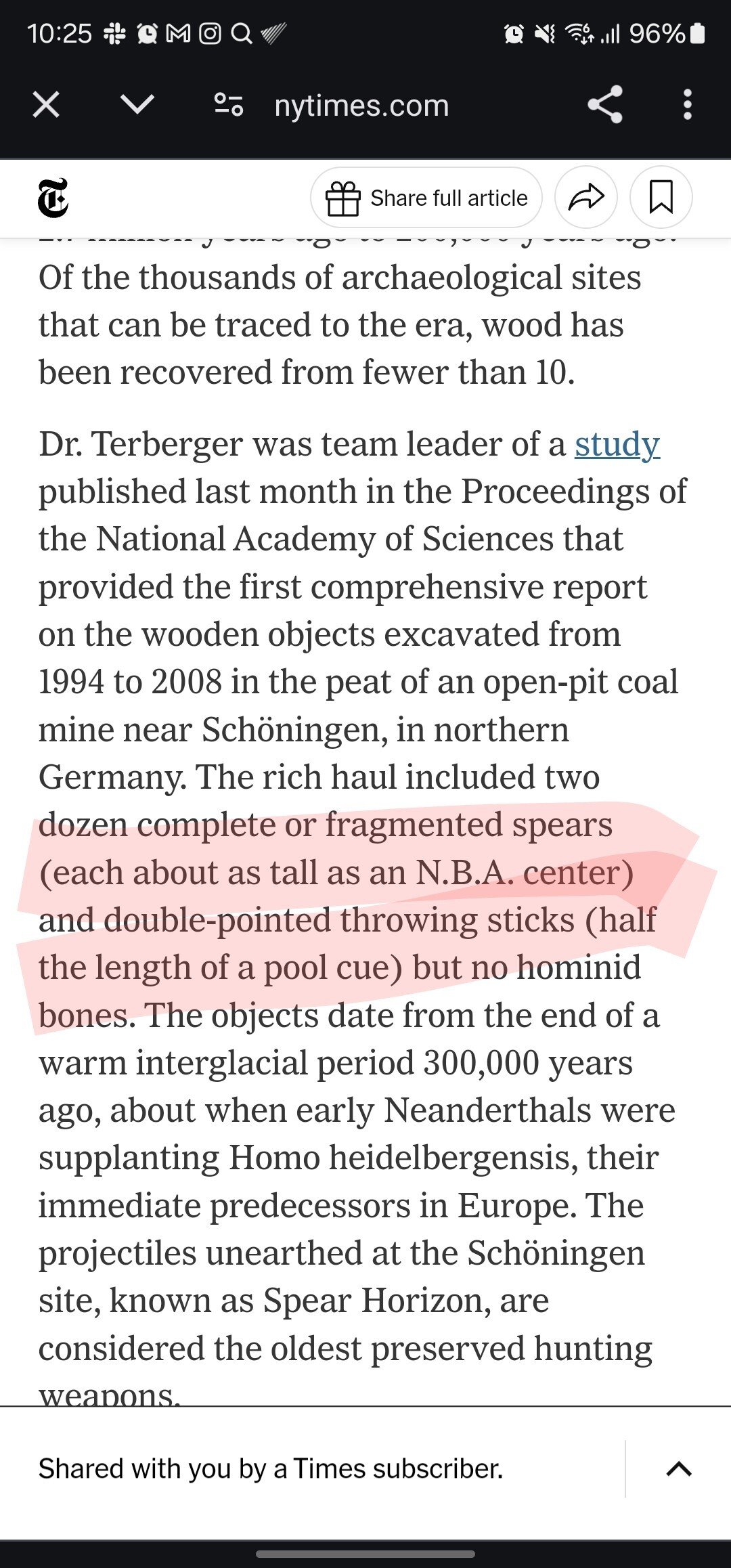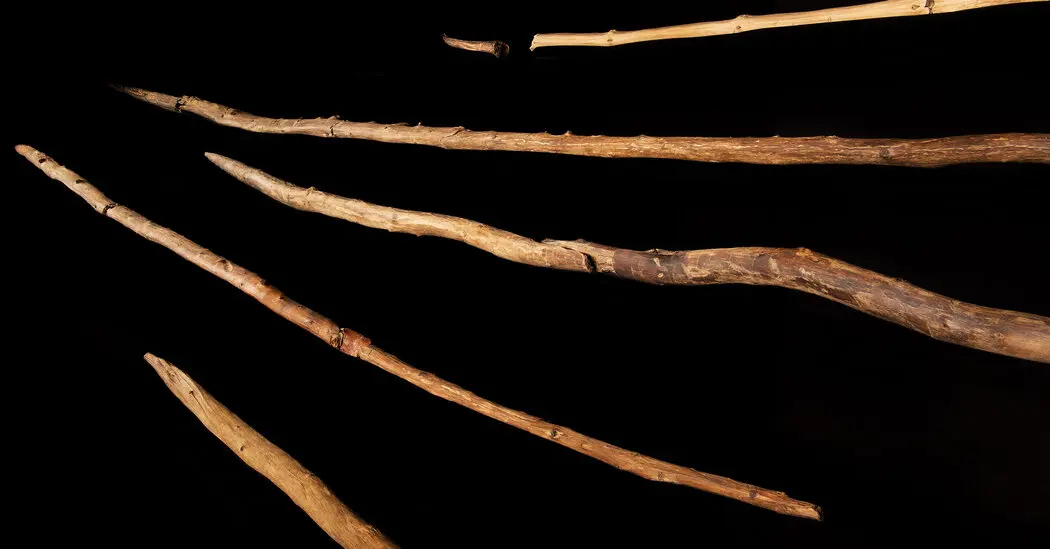I’ll go one further, it was the textile age. Thread (and string and rope and sewing) was the huge technological revolution that shaped humanity. That stuffs even more entropic than wood though.
“We can probably assume that wooden tools have been around just as long as stone ones, that is, two and a half or three million years,“ he said. “But since wood deteriorates and rarely survives, preservation bias distorts our view of antiquity.” Primitive stone implements have traditionally characterized the Lower Paleolithic period, which lasted from about 2.7 million years ago to 200,000 years ago. Of the thousands of archaeological sites that can be traced to the era, wood has been recovered from fewer than 10.
Why does Americans publishers insist on using strange and “random” object to measure height and length?

Americans will use anything but the metric system.
Anything but the international standard system of units, that is.
This can go two ways:
- well yes, but actually no And -well no, but actually yes
But only for ritual/ceremonial use
Since neither spruce nor pine would have been available at the lakeshore, where the site was located, the research team deduced that the trees had been felled on a mountain two or three miles away or perhaps even farther.
300,000 years seems like a long time to be confident about what trees grew where, no?
Each species tends to prefer very specific conditions, and in this case, they’ve got evidence that they were not manufactured where they were found. Per the paper:
They likely were introduced as finished tools to the site since working debris of the initial production stage is absent (bark/branches), while point fragments and traces of reworking demonstrate spears and DPSs were used and repaired on-site. They can be considered curated tools of personal gear used and maintained for as long as possible.
The distance they give is the nearest location where the materials would be available, based on somebody else’s study:
The ratio of spruce plus spruce/larch to pine items decreases from 3.8 in category 1 to 1.1 in category 4 meaning that the former more often provides clear artifacts. Paleoenvironmental studies show the raw material was not available at the lakeshore but must have been transported from the nearby Elm Mountain some 3 to 5 km away or locations farther afield like the Harz Mountains (26).
That study can be found here




